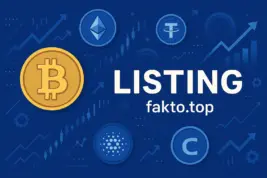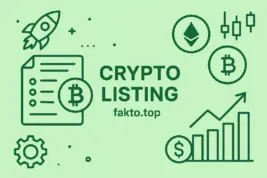Crypto Listings Explained: How Tokens Hit Exchanges & Why It Matters
Listing… you know the drill
Crypto Listings: How Tokens Hit Exchanges and Why Investors Should Care
Crypto listings are a major milestone for any blockchain project. When a token gets listed on an exchange, it suddenly becomes tradable for millions worldwide. This isn’t just a boring technical step—it’s a marketing and financial flex. For investors, a listing often signals a fresh opportunity to snag a promising token early, while for developers, it’s recognition, visibility, and a shot at scaling. Big-name platforms like Binance offer mega exposure, but getting listed isn’t a walk in the park. Exchanges have strict rules: transparency, security, a thriving community, and a unique value proposition are table stakes.
Let’s dive into what crypto listings actually are, how the process works, the different types of exchanges, and how to track the hottest new tokens.
What Exactly is a Crypto Listing (and Why It Matters)
A listing is when a cryptocurrency is added to an exchange’s trading roster. After that, the token can be bought, sold, and swapped in trading pairs. For a project that’s just ramping up, this is huge.
Listings bring liquidity and open the global market door. Without it, a token basically hides in the shadows. Listings on big players like Binance, Bybit, OKX, or KuCoin can pump trust and price potential. The more exchanges support a coin, the juicier the prospects for growth and user confidence.
It’s also a quality stamp—the exchange vets projects before giving the green light, so investors get some peace of mind.

The Listing Process: From Application to Launch
Listing a token starts with the project team submitting an application. Exchanges then evaluate it based on a checklist: working product, active community, trading volumes, transparency, code security, and originality. Some require audits or legal docs. Once approved, there’s tech integration, trading pair setup, and launch.
Listings often come with hype—AMAs, promo events, airdrops. On giants like Binance, every new token grabs attention. A successful listing can spike interest, trading activity, and even price. But not all applications make it: hundreds get rejected for failing to meet quality standards.
Exchange Types: CEX vs. DEX and Listing Nuances
Crypto exchanges fall into two categories: centralized (CEX) and decentralized (DEX). CEX listings are formal and often tough. Binance, for example, demands applications, audits, and tech integration. They provide liquidity, security, marketing, and exposure—but the gate is high.
DEX platforms like Uniswap or PancakeSwap let you list without permission. Just create a liquidity pool and boom, you’re live. The catch? Less safety, more scams, and no official support. For long-term projects, a CEX listing is gold.
Still, a DEX listing can be a solid first step to test community interest and token demand.

Where to Track New Crypto Listings
Don’t want to miss the next big thing? Track listings via official exchange blogs (Binance, OKX, Huobi, Gate.io) or aggregator sites like CoinMarketCap, CoinGecko, and CryptoRank. These show upcoming listings, trading start dates, supported pairs, and exchanges.
Pro traders and savvy investors use these calendars to hop on tokens before the hype. For projects, it’s a way to flex and prove market presence. Following listings is basically part of your playbook if you want to catch early movers.
Pro tip: verify sources and never trust rumors without official confirmation from the exchange.
Getting Listed on Binance: The Tough Reality
Listing on Binance is a dream—but the requirements are intense. Teams need a real product, an engaged community, solid tokenomics, and transparency. Binance evaluates tech, founder reputation, growth metrics, and liquidity on other platforms. Applications go through multiple review stages.

Some projects hit the Launchpad or Launchpool—special Binance platforms for debuting tokens. A Binance listing gives access to millions, marketing support, and global recognition. But it takes prep, resources, and clear positioning.
Why a Listing is a Big Deal
Listing a token brings serious perks:
- Liquidity: users can finally buy and sell freely.
- Validation: approval = credibility stamp.
- Community growth: more eyeballs, more investors, more hype.
Listings can boost a token’s price, open doors to partnerships, marketing, and future listings. For devs, it’s the jump from concept to real market presence. Proper listing prep is a core strategy for any crypto project.
Listing Risks and Common Pitfalls
Listings aren’t all rainbows.
Rushing without proper legal or tech prep can lead to rejections or lost trust. Some tokens end up on low-liquidity exchanges—hello, stagnant trading. Overhyped expectations can backfire if the pump never comes. And beware scams: fake announcements, shady exchanges.
Stick to vetted platforms, plan thoroughly, and communicate clearly. Transparency and strategy = your best friends in the listing game.